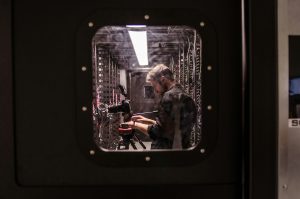The Future of Hybrid Campus Design Models
The architecture of higher education campuses has gone through several changes over the years, from traditional brick and mortar buildings to modern-day smart campuses. However, with the unprecedented challenges posed by the COVID-19 pandemic, the concept of hybrid campus design has emerged as the future of higher education. This approach combines the best of both physical and virtual worlds to offer an enhanced learning experience for students. In this article, we will explore the future of hybrid campus design models and how they are shaping the future of higher education.
The Need for Hybrid Campus Design Models
The emergence of online learning platforms has provided students with the convenience and flexibility of accessing educational resources from anywhere and at any time. However, it has also highlighted the limitations of traditional physical campuses. With the pandemic forcing educational institutions to shut down their campuses, there was an urgent need for a solution that could offer a seamless transition to online learning without compromising the quality of education.
Hybrid campus design models bridge this gap by combining the physical and virtual aspects of higher education. It allows for a flexible learning approach where students can learn both in a physical classroom and through online platforms. With the integration of technology, hybrid campuses offer a dynamic learning environment that caters to the needs of modern-day students.
Benefits of Hybrid Campus Design Models
1. Enhanced Flexibility and Accessibility
With hybrid campuses, students have the flexibility to attend classes either physically or virtually. This allows for a more accessible learning experience as students have the option to choose the mode of learning that suits them best. Additionally, hybrid campuses also provide students with access to educational resources and materials at any time and from any location, promoting self-paced learning.
2. Improved Learning Experience
The integration of technology in hybrid campuses offers a more interactive and engaging learning experience for students. With the use of online tools, students can collaborate with their peers and interact with their instructors in real-time. This enables students to have a deeper understanding of the course material and promotes active learning.
3. Cost-effective Solution
By combining the physical and virtual aspects of higher education, hybrid campuses offer a cost-effective solution for both students and educational institutions. Students can save on accommodation and transportation costs, while educational institutions can reduce their overhead expenses by using technology to deliver courses.
The Future of Hybrid Campus Design Models
The success of hybrid campus design models during the pandemic has highlighted the potential of this approach in shaping the future of higher education. As we move towards a post-pandemic world, hybrid campuses are expected to continue to play a significant role in the education sector.
One of the key trends that will shape the future of hybrid campuses is the use of innovative technologies. Augmented and virtual reality, artificial intelligence, and gamification are some of the technologies that are expected to revolutionize the learning experience in hybrid campuses. These technologies will provide students with a more immersive learning experience, making the learning process not only more efficient but also more enjoyable.
Another trend that we can expect in the future of hybrid campuses is the integration of hybrid learning in the curriculum. Educational institutions will offer hybrid learning options for all courses, giving students the freedom to choose the mode of learning that best suits their needs. This will also open up opportunities for students to take courses from other institutions without the constraints of geographical boundaries.
Conclusion
The future of higher education lies in the hands of hybrid campus design models. With the integration of technology and the flexibility it offers, hybrid campuses are shaping the way students learn and paving the way for a more inclusive and accessible education system. As we continue to adapt to the ever-changing landscape of education, one thing is certain – hybrid campuses are here to stay.










